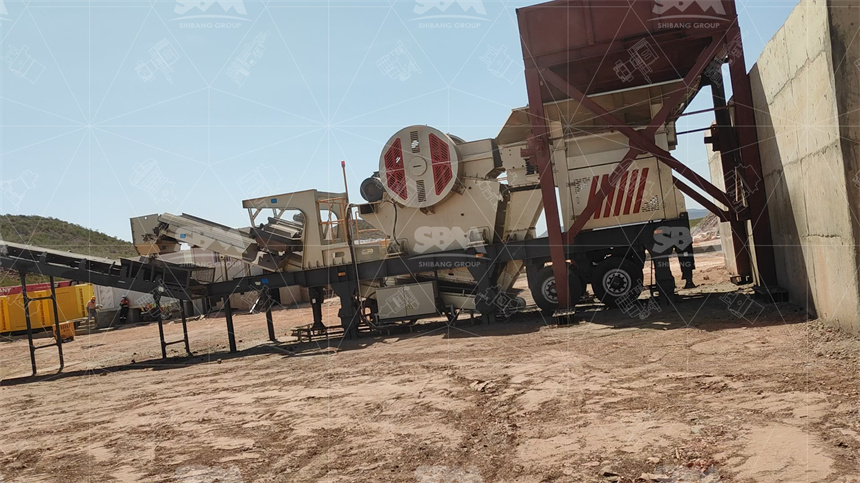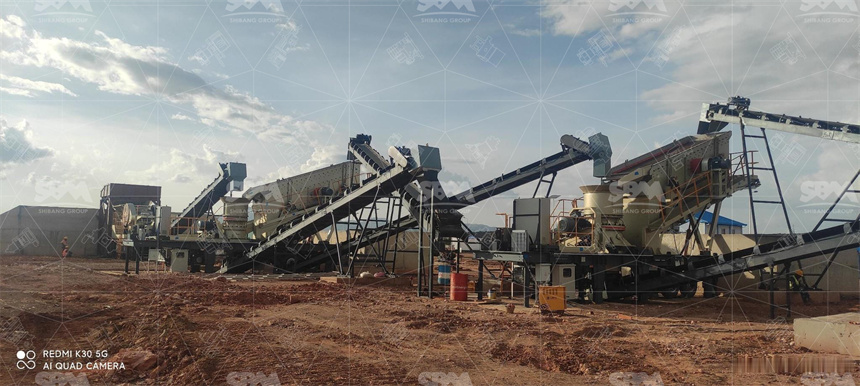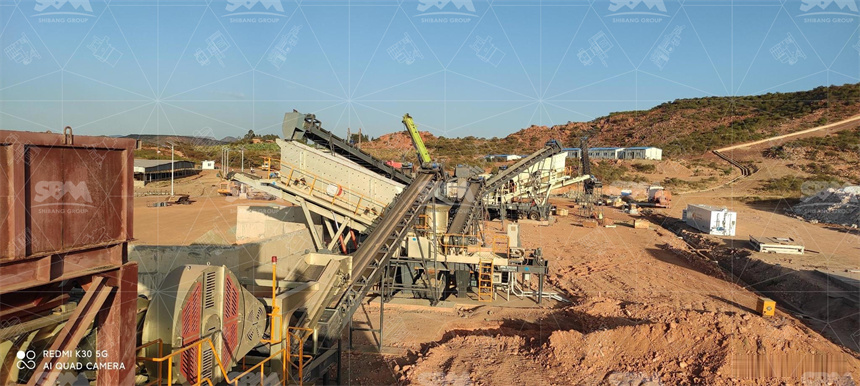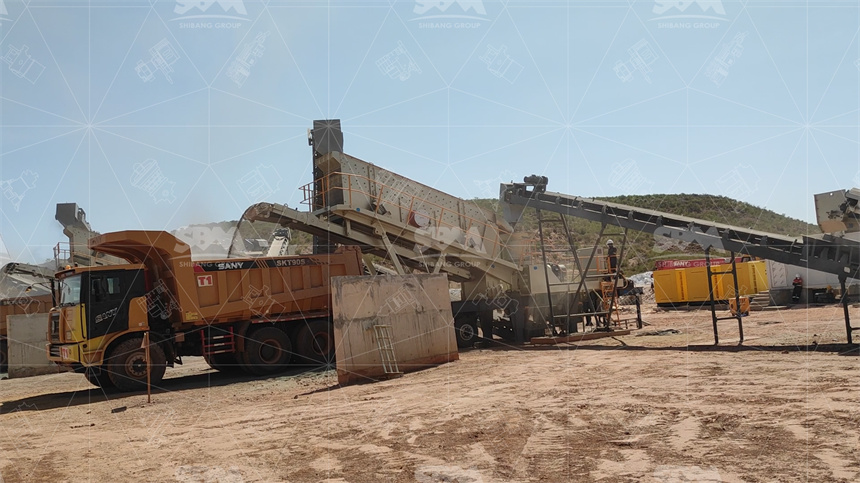In gold-mining sector; rock breaking and ore-treatment stay constant challenges. Ore-bodies differ in hardness! abrasiveness? and humidity, making device choice really decisive. Portable-crushers, designed with advanced cavity geometry & motor-power balance; bring optimized efficiency for miners who facing mobile operations or remote condition. This article give structured exploration of portable crushing technology for gold-mines,, integrating technical data, working-principles; field cases, and operational advice. It also review professional insight from many global projects and reference proven engineer standards.

A portable-crusher is movable crushing equipment designed to reduce excavated rock to smaller-size for downstream milling & separation. In gold extraction, its main role is first or second crushing of ores with compressive-strength below 320 MPa. Compared with static machines; portable crushers ensure quick relocation, continuous output, even in far site. Its significance lies in ability to process quartz, sulfide-bearing ore, and weathered rocks efficiently, while keeping flow-sheet requirement.
The crusher works on compressive-force applied by jaw-plate or rotor set. Material enters chamber thru feed-opening and reduced by squeeze or impact between fix and moving parts. Chamber-profile; CSS (Closed Side Setting), OSS (Open Side Setting), eccentric-throw and rotating speed decide reduction-ratio. For portable jaw-crushers CSS adjustable 40–150 mm, giving precise control of product granularity. Rotating speeds range 250–340 rpm. Motors rated 110–250kW, matched with ore density for efficiency.
Performance indicators is the core of choosing crusher. Portable-crushers for gold usually give crushing ratio 4–6, feed-openings up to 1000 mm, discharge adjustable to 40mm. Capacities vary 55–800 t/h depending ore-strength and feeding-size. Fuel consumption for diesel versions about 0.26 liter/ton processed ore, while electric consume 0.7–1.1 kWh per ton. Maintenance-cycle average 850–1000 working hours before major checking. Reality data show failure-rates below 2 percent yearly when lubrication cycles followed properly.
| Model | Feed (mm) | Capacity (t/h) | Motor (kW) |
|---|---|---|---|
| Jaw Portable 750 | ≤635 | 115–315 | 112 |
| Impact Portable 1214 | ≤295 | 95–248 | 133–161 |
| Cone Portable 1320 | ≤205 | 82–345 | 162–251 |

Portable crushers are excellent in treating gold-bearing quartz, oxide-hosted ores, sulfide rock; and weathered lateritic. They also suit processing river pebble; granite, basalt, construction rubbles. By adjusting cavity design & liner-materials, operators can handle abrasive-ores with no excessive wear. Adaptability extend also to wet climate; with water-spray reducing dusts and stopping screen blocking. In high humidity or clayey feed, vibrating feeder grizzly stop bridging and keep throughput stable.
One medium-size mine in South Africa installed portable jaw-crusher with 750 mm inlet for quartz ore. The device processed 182 t/h at CSS 81 mm. Motor of 133kW matched with ore-strength 185–200 MPa. Energy usage record 0.91 kWh per ton, 14.8% lower than earlier fixed-crusher. Maintenance-cycle extend 948 hours, liner life >45,200 tons throughput. Operators saying downtime drop 27% thanks to relocation flexibility and hydraulic-clearance chamber.
At 4200 m altitude, a portable impact-crusher deployed. Ore-type had oxidized gold with pyrite. Feeding size under 248mm, output 122–181 t/h of minus 25mm product. Motor-power 161 kW, adaptive frequency adjust for altitude effect. Fuel consumption ~0.23 liter per ton. Despite low temp down –11°C, uptime 93%+. Local staff say low-maintenance was key factor; rotor wear survived 50k tons throughput before swap.

A cone portable unit use in Kalimantan open-pit, processing gold ore containing 40% silica. Feeding 179 mm reduced to 19–21 mm. Machine throughput 242–278 t/h with 221kW motor. Real logging show energy-efficiency 0.84 kWh/ton, 12.3% better baseline. Maintenance log: liner-change after 60,100 tons; hydraulic clearing gave 10 minute unblock. Client praised low vibration levels, longer bearing service, less chassis stress.
Portable crusher built of chassis, feeder, chamber, conveyors, motor and PLC system. Chassis reinforced with high-grade steel for transport. Chambers may be jaw, cone or impact depend stage. Drive option include diesel-electric hybrid; save fuel-cost 18% vs diesel-only. Belt transmission keep torque balance, hydraulic setting give CSS precision. Control panel integrate overload-protection, remote diagnose, automation support.
Data from sites show availability above 91.5%, mean-time between fault >1200 h, daily utilization 18h+. Common maintain: liner-swap, greasing, screen tighten. Predictive maintenance with vibration monitor reduce breakdown 41%. Frequent issues: feed-block, uneven liner wear, belt misalignment—all mitigated by supervision. Compared with static plants, relocation save 34% setup-cost in remote mining area.
Portable crushers follow ISO9001 for quality, ISO14001 for eco-compliance, CE mark for EU safety. Motors meet IEC standard, welds conform DIN. These proof ensure durability, low emission, safe working. Third-party test confirm crushing ratio and liner hardness values; providing strong credibility in mining engineering field.

When choose portable crusher for gold-ore; key factors: feeding curve, compressive-strength, needed product size, mobility demand. For hard rocks >200 MPa; jaw or cone best. For soft ores or secondary, impact better cubicity. Power supply must match site—grid connect favor electric drive, remote favor diesel-hybrid. Decision include projection of output, maintain access, full life-cycle cost compare.
Gold mining always require adaptive, efficient, reliable machines. Portable-crushers offer unmatched flexibility; strong throughput; lower operation cost. Their tested performance in Africa, S.America, Asia show engineering value. Users get less downtime, improved fuel-economy, easier service. For investors and engineer, portable-crusher adoption is strategic choice, ensuring sustainable and profitable gold mining. In sum, processing challenges solved by portable crushers combining mobility, robust-build, and professional output-power.
Whatsapp:+8617329420102
Email: [email protected]
Address: No. 1688, Gaoke East Road, Pudong new district, Shanghai, China.
Online Service : Get Price
We value your feedback! Please complete the form below so that we can tailor our services to your specific needs.
